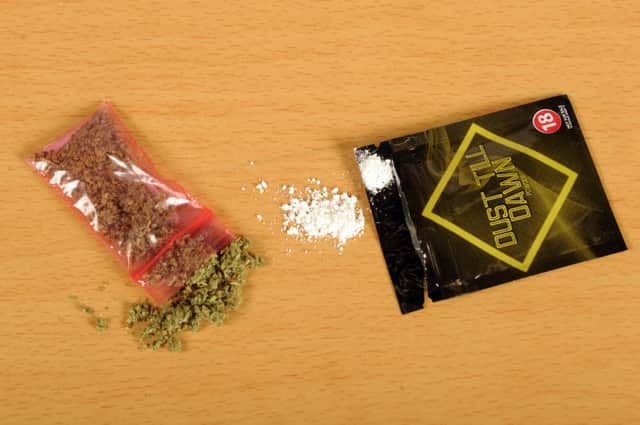Legal high deaths nearly double in a year


While the overall number of drug-related deaths in Scotland fell by 9 per cent in 2013, there were 113 where “new psychoactive substances” (NPS) – commonly known as legal highs – were involved, up from 47 in 2012.
Of those, pathologists were able to “implicate” legal highs as having possibly contributed to 60 deaths, up from 32 the previous year. However, there were only five cases where NPS were the only substances implicated in the death.
Advertisement
Hide AdAdvertisement
Hide AdOverall, there were 526 drug-related deaths registered in Scotland in 2013, 9 per cent down on the previous year, according to the figures released by the Scottish Government.
There is growing concern over the dangers of legal highs, particularly the trend of mixing them with other drugs and alcohol.
Often marketed as bath salts, plant food or pond cleaner, the substances can be bought easily online and have even been found on sale in newsagents.
The Scottish Government is currently looking at ways of restricting the sale of the substances amid concern over increased hospital admissions.
Community safety minister Roseanna Cunningham said: “The number of drug deaths dropped by 9 per cent last year and that is to be welcomed. The hope is that increases in previous years have now come to an end and numbers are now levelling off. These statistics are a product of a long legacy of drug misuse among older users.
“We know we face a tough challenge, but there are signs our approach is working.
“Drug-taking in the general adult population is falling, and far fewer young people are taking drugs than ever before.”
On legal highs, she added: “This government is committed to doing everything we can to restrict access to new psychoactive substances, or so-called legal highs, and to educate people about their dangers.
Advertisement
Hide AdAdvertisement
Hide Ad“That’s why we have published an NPS evidence review which summarises the key information that we have to date on NPS, and are developing further research into the scale of the problem and gaps in evidence.
“The rise in deaths in which NPS are implicated is a cause for concern. But the statistics show that, as with the vast majority of drug deaths, alcohol and a combination of other drugs are also a factor.”
“We are determined to get the message through – legal does not equal safe.”
In April, 19-year-old Helen Henderson from Renfrew became the latest person to die after taking the stimulant mephedrone, or Mcat.
Previously, one of the growing number of legal highs, Mcat was made a class-B drug in 2010 after being linked to a number of deaths. Carole Kelly, chief executive of the charity Crew 2000, said legal highs posed a danger for both experienced and inexperienced drug-users.
She said: “NPS may be cheaper than known illegal drugs and we are aware of people using them across different age ranges and social groups.
“People who haven’t used drugs before are at risk if they do not have experience or credible information with which to make informed choices about NPS and people who have previously used other drugs may not be aware of additional risks and consequences of use.
“Crew provides outreach, education, information and support to ensure people have the best information possible to enable them to make the best choices for them – we neither condemn nor condone drug use but we do know that harm can be reduced.
Advertisement
Hide AdAdvertisement
Hide Ad“We see substance use as a public health issue and applaud the Scottish Government for identifying NPS as a ministerial priority.”
According to figures released yesterday, three-quarters of those who died taking drugs were men. More than 90 per cent of deaths were of people who had taken more than one drug.
Roy Robertson, chair of the National Forum on Drug- Related Deaths, said: “These figures are a familiar representation of a complex problem.
“The welcomed reduction in total numbers of drug-related deaths is in line with fluctuations seen over a long time period but, hopefully, shows an improving situation.
“In addition, the pattern of multiple drug ingestion leading to a fatality is continued from previous years.
“It is interesting that the cases involving new psychoactive substances are almost all included in the main totals, indicating that for those dying after taking an NPS, other drugs are also ingested.
“The complex nature of drug problems and the many reasons why they can sometimes lead to a fatal event makes it difficult to attribute a single reason for change.
“It may be, however, that the many interventions implemented by treatment services and prevention initiatives have had an effect.”